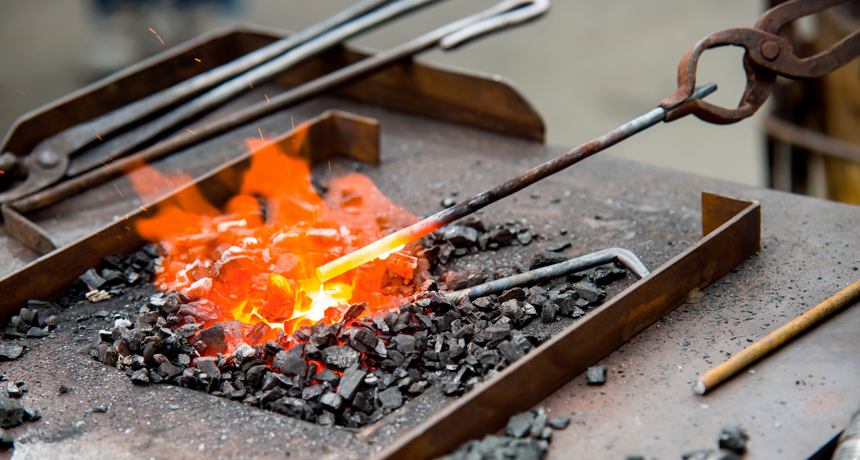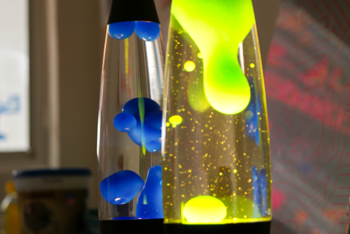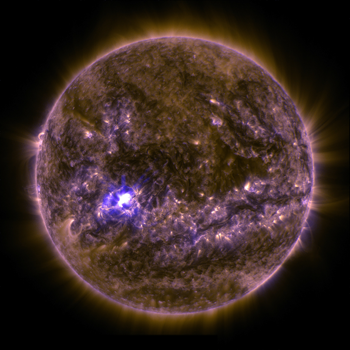Explainer: How heat moves
Here are the three processes by which energy can be transferred from one place to another

Heat is being transferred from the hot end of this rod to the cold end via conduction, but the hot end of the rod is also radiating heat via that orange glow.
Dvoinik/iStockphoto
By Sid Perkins
Throughout the universe, it’s natural for energy to flow from one place to another. And unless people interfere, thermal energy — or heat — naturally flows in one direction only: from hot toward cold.
Heat moves naturally by any of three means. The processes are known as conduction, convection and radiation. Sometimes more than one may occur at the same time.
First, a little background. All matter is made from atoms — either single ones or those bonded in groups known as molecules. These atoms and molecules are always in motion. If they have the same mass, hot atoms and molecules move, on average, faster than cold ones. Even if atoms are locked in a solid, they still vibrate back and forth around some average position.
In a liquid, atoms and molecules are free to flow from place to place. Within a gas, they are even more free to move and will completely spread out within the volume in which they are trapped.
Some of the most easily understood examples of heat flow occur in your kitchen.
Conduction
Put a pan on a stovetop and turn on the heat. The metal sitting over the burner will be the first part of the pan to get hot. Atoms in the pan’s bottom will start to vibrate faster as they warm. They also vibrate farther back and forth from their average position. As they bump into their neighbors, they share with that neighbor some of their energy. (Think of this as a very tiny version of a cue ball slamming into other balls during a game of billiards. The target balls, previously sitting still, gain some of the cue ball’s energy and move.)
As a result of collisions with their warmer neighbors, atoms start moving faster. In other words, they are now warming. These atoms, in turn, transfer some of their increased energy to neighbors even farther from the original source of heat. This conduction of heat through a solid metal is how the handle of a pan gets hot even though it may be nowhere near the source of heat.
Convection
Convection occurs when a material is free to move, such as a liquid or a gas. Again, consider a pan on the stove. Put water in the pan, then turn on the heat. As the pan gets hot, some of that heat transfers to the molecules of water sitting on the bottom of the pan via conduction. That speeds up the motion of those water molecules — they are warming.

As the water warms, it now begins to expand. That makes it less dense. It rises above denser water, carrying away heat from the bottom of the pan. Cooler water flows down to take its place next to the hot bottom of the pan. As this water warms, it expands and rises, ferrying its newly-gained energy with it. In short order, a circular flow of rising warm water and falling cooler water sets up. This circular pattern of heat transfer is known as convection.
It’s also what largely warms food in an oven. Air that’s warmed by a heating element or gas flames at the top or bottom of the oven carries that heat to the central zone where the food sits.
Air that’s warmed at Earth’s surface expands and rises just like the water in the pan on the stove. Large birds such as frigate birds (and human flyers riding engineless gliders) often ride these thermals — rising blobs of air — to gain altitude without using any energy of their own. In the ocean, convection caused by heating and cooling helps to drive ocean currents. These currents move water around the globe.
Radiation
The third type of energy transfer is in some ways the most unusual. It can move through materials — or in the absence of them. This is radiation.

Consider visible light, a form of radiation. It passes through some types of glass and plastic. X-rays, another form of radiation, readily pass through flesh but are largely blocked by bone. Radio waves pass through the walls of your home to reach the antenna on your stereo. Infrared radiation, or heat, passes through the air from fireplaces and light bulbs. But unlike conduction and convection, radiation doesn’t require a material to transfer its energy. Light, X-rays, infrared waves and radio waves all travel to Earth from the far reaches of the universe. Those forms of radiation will pass through plenty of empty space along the way.
X-rays, visible light, infrared radiation, radio waves are all different forms of electromagnetic radiation. Each type of radiation falls into a particular band of wavelengths. Those types differ in the amount of energy they have. In general, the longer the wavelength, the lower the frequency of a particular type of radiation and the less energy it will carry.
To complicate things, it’s important to note that more than one form of heat transfer may occur at the same time. A stove’s burner not only heats a pan but also the nearby air and makes it less dense. That carries warmth upward via convection. But the burner also radiates heat as infrared waves, making things nearby warm up. And if you’re using a cast-iron skillet to cook a tasty meal, be sure to grab the handle with a potholder: It’s gonna be hot, thanks to conduction!







